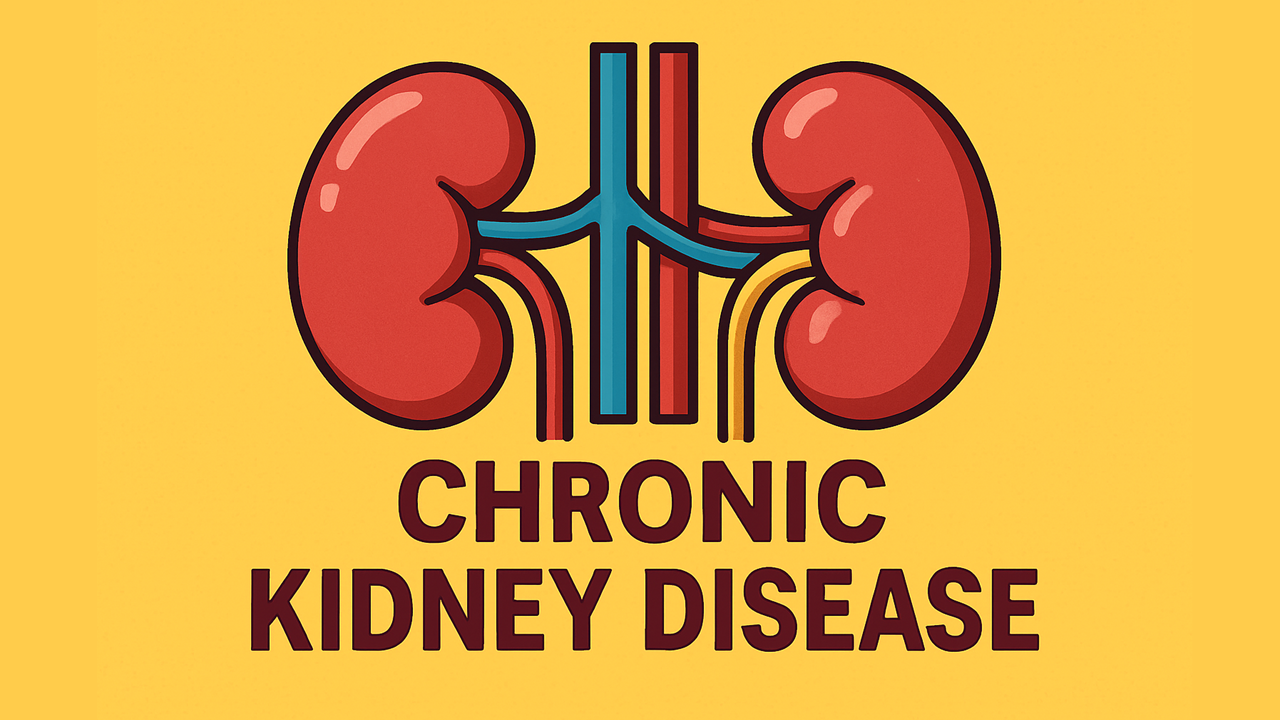Intermittent Fasting Benefits and Risks: Science-Backed Insights
Introduction
Intermittent fasting (IF) has gained enormous popularity as a strategy for weight loss and overall wellness. Proponents claim it can boost everything from metabolic health to mental clarity, but critics highlight potential drawbacks and point to limited long-term human data. This article takes a close look at the latest research on IF—exploring evidence-backed benefits, documented risks, and implementation guidelines—so you can decide whether this approach fits your lifestyle and health goals.
Scientific Overview of Intermittent Fasting
Intermittent fasting is an eating pattern that alternates between defined periods of eating and extended hours (or days) of minimal to no caloric intake. Unlike many traditional diets, IF emphasizes when you eat rather than what you eat. Common protocols include:
Time-Restricted Eating (TRE): Confining daily meals to a set window (e.g., 16 hours of fasting, 8 hours of eating).
Alternate-Day Fasting: Eating normally one day and substantially limiting calories (or not eating) the next day.
5:2 Diet: Consuming a regular diet five days a week and restricting intake (to around 500–600 calories) on the other two nonconsecutive days.
Once the body depletes its readily available glucose stores, it typically switches to burning stored fat—a metabolic state known as ketosis—around 12–16 hours into a fast. This also activates autophagy, a cellular process that recycles and clears damaged cellular components. Contrary to misconceptions, IF is not about depriving yourself of essential nutrients; it simply compresses your eating into fewer daily hours or specific days each week. During fasting periods, staying hydrated with water, black coffee, or other zero-calorie beverages is strongly recommended.
Clinically Supported Benefits of Intermittent Fasting
Weight Loss and Fat Reduction
Intermittent fasting can help many people reduce total caloric intake, resulting in weight loss [1]. One 12-week trial found that participants following an 8-hour TRE schedule lost an additional 2.4–3.1 kg compared to a control group eating normally [1]. Another study involving individuals with metabolic syndrome showed a 3–4% reduction in body weight over three months by limiting daily meals to an 8–10 hour window [2]. Notably, research suggests that IF may preserve lean muscle better than conventional low-calorie diets, likely because fasting phases encourage the body to tap into stored fat for fuel rather than muscle protein [3].
Key takeaway: IF is often just as effective as traditional calorie restriction, but some find it easier to adhere to because of its structured schedule.
Improved Blood Sugar Control and Insulin Sensitivity
Studies indicate that fasting periods can lower insulin levels and enhance insulin sensitivity over time [4]. For example, one randomized trial published in Annals of Internal Medicine (2024) found that an 8-hour eating window significantly reduced hemoglobin A1c in adults with metabolic syndrome after three months [5]. A separate study in older adults suggested that a 5:2 intermittent fasting regimen improved insulin responsiveness in both the brain and body [6].
Bottom line: By regularly resting the pancreas and reducing overall calorie intake, IF may help stabilize blood glucose and potentially lower the risk of type 2 diabetes.
Cardiovascular Health Markers
IF may improve heart-related risk factors such as blood pressure, LDL cholesterol, and markers of systemic inflammation [7]. Participants on fasting regimens in short-term trials often exhibit modest drops in blood pressure and “bad” cholesterol, partly due to weight loss and better insulin sensitivity. Some preliminary data also point to reductions in inflammatory markers like CRP, beneficial for cardiovascular health [8].
In context: While IF has shown promise in improving these markers, experts agree that food quality remains critical—no form of fasting negates the need for a nutrient-rich diet.
Brain Health and Cognition
Animal models have long suggested that fasting could boost brain function and potentially defend against neurodegenerative conditions like Alzheimer’s disease, partly due to increased brain-derived neurotrophic factor (BDNF) and enhanced autophagy [9]. Emerging human studies are tentatively supportive. In 2024, NIH researchers reported that a 5:2 diet in older adults was linked to stronger improvements in executive function than a standard healthy diet [6]. Many practitioners also report “mental clarity” or sharper focus on fasting days.
Perspective: It’s too early to conclude IF can definitively improve long-term brain health or prevent dementia, but preliminary findings are encouraging and warrant further investigation.
Cellular Repair and Longevity Potential
Autophagy—a “cellular housekeeping” function—ramps up during extended fasts, clearing out damaged proteins and organelles [10]. Rodent studies consistently demonstrate that intermittent fasting can extend lifespan and reduce age-related diseases. Additionally, human populations engaging in habitual fasting for religious or cultural reasons often report lower rates of heart disease and certain cancers [11].
Caveat: No large-scale, long-term trial has confirmed that IF prolongs human lifespan or definitively prevents major diseases, but the underlying biological mechanisms are plausible.
Documented Risks and Contraindications
Hunger and Short-Term Side Effects
Initial weeks of IF commonly bring headaches, fatigue, hunger pangs, irritability, or insomnia [12]. While many people adapt within a month, some find these effects persist, making IF unsustainable. If intense hunger or daily fatigue severely disrupts your routine, you may need a different approach.
Disordered Eating Patterns
Rigid fasting schedules can potentially trigger or worsen disordered eating, especially in those with a personal or family history of conditions like anorexia or bulimia [13]. If fasting heightens anxiety, guilt, or obsession with food timing, it’s prudent to discontinue and consult a mental health professional or registered dietitian.
Groups Unsuitable for IF
Experts advise that certain populations should avoid IF or only attempt it under medical supervision:
Pregnant or Breastfeeding Women: Elevated nutritional needs make fasting risky.
Children and Adolescents: Ongoing growth and development require steady nutrient intake.
Elderly or Frail Individuals: Risks include dizziness, falls, or accelerated muscle/bone loss.
People on Certain Medications: Blood pressure, blood sugar, and other meds may require food or precise dosing schedules.
Type 1 Diabetics: Prolonged fasting can lead to dangerous hypoglycemia without vigilant monitoring.
Hormonal Disruptions (Especially in Women)
The hypothalamus can reduce reproductive hormone output if it perceives significant energy scarcity [14]. As a result, some women experience irregular cycles or missed periods with intense IF schedules. Chronically elevated stress hormones (like cortisol) may also undermine the positive effects of fasting by impacting blood pressure and insulin sensitivity.
Low Blood Sugar and Medication Hazards
Fasting for too long can cause severe hypoglycemia if you’re on insulin or certain oral diabetes medications [15]. Even without diabetes, sensitive individuals might get shaky or dizzy from plunging blood glucose. Medical providers generally advise close monitoring and potential medication adjustments if you plan to adopt IF while managing type 2 diabetes.
Nutrient Deficiencies and Malnutrition
Condensed eating windows make it more challenging to obtain adequate protein, vitamins, and minerals [16]. Eating only once a day or drastically cutting calories multiple times a week, especially without careful planning, can lead to iron, calcium, or B-vitamin deficits. Extreme protocols such as “dry fasting” (no water) heighten the risk of electrolyte imbalances and should be avoided altogether.
Possible Cardiovascular Concerns
One large observational study of over 20,000 U.S. adults found that very narrow eating windows (<8 hours) were associated with a 91% higher risk of dying from heart disease, though causation remains unclear [17]. Another Mayo Clinic report suggests that highly restrictive IF might double mortality risk compared to non-fasters [17]. Researchers suspect factors like unhealthy refeeding habits, genetic predispositions, or disruption of circadian rhythms may play a role.
What Science Still Doesn’t Know
Several questions remain unresolved as IF gains popularity:
Long-Term Effects: Most human trials last months to a year, leaving the true multi-year impacts unknown.
Optimal Schedules: Whether 16/8, 18/6, alternate-day, or 5:2 regimens are superior remains unverified, likely varying by individual.
Unique Mechanisms vs. Calorie Restriction: It’s debated whether the metabolic perks of IF exceed those of simple calorie reduction.
Population-Specific Responses: Research is lacking on how IF affects older adults, athletes, or people with various medical conditions.
Rare or Unseen Side Effects: Potential links to gallstones or even increased cancer risk under certain conditions are still being studied.
Guidelines for Safe Implementation
Consult a Healthcare Professional
Talk to your doctor if you have underlying conditions like diabetes, hypotension, or kidney issues. This is crucial for medication adjustments and overall safety.Choose a Realistic Fasting Protocol
Aim for a schedule you can sustain—whether it’s 16/8 daily, a more moderate 14/10, or the 5:2 approach. Consider social and work commitments to minimize disruptions.Ease Into IF Gradually
Begin with an easy 12-hour fast (e.g., 8 p.m.–8 a.m.) before extending to longer windows. Gradual adaptation helps reduce side effects such as headaches and fatigue.Emphasize Nutrient-Dense Foods
Fill your eating window with lean proteins, fiber-rich carbs, healthy fats, and plenty of vegetables. Avoid using a narrow eating window as an excuse for junk food binges.Stay Hydrated
Drink ample water and calorie-free beverages during fasts to prevent headaches, constipation, and dizziness. Never attempt “dry fasting,” which can be dangerous.Plan Your Meals
Prepping balanced options beforehand helps avoid unhealthy snap decisions when you’re extremely hungry at the end of a fast.Avoid Extreme Fasting
OMAD (one meal a day) or multiple 24+ hour fasts each week can strain your system and raise the risk of nutrient deficits or muscle loss. In most cases, moderate fasting windows suffice.Listen to Your Body
Severe fatigue, persistent irritability, or significant hormonal shifts (e.g., missed periods) indicate it’s time to adjust or discontinue your chosen protocol.
Conclusion & Key Takeaways
Intermittent fasting offers a promising path to weight management, metabolic improvement, and potentially even cellular health—but it is not a panacea. Structured fasting windows can help you consume fewer calories and stabilize insulin levels, yet no eating pattern can override a poor overall diet. Additionally, IF is not suited for everyone, especially those with certain medical conditions or a history of disordered eating.
Focus on Quality: Even with IF, prioritize unprocessed, nutrient-dense foods.
Personalize the Schedule: There is no “one-size-fits-all” regimen; find a protocol that aligns with your lifestyle.
Stay Updated: Research on long-term outcomes, optimal timings, and population-specific effects is ongoing.
Seek Professional Guidance: Medical oversight is key for individuals on medications or with chronic conditions.
By applying these insights, you can approach intermittent fasting in a balanced, informed way—maximizing benefits while minimizing risks. Above all, remember that health is holistic: combine mindful eating (whether fasting or not) with regular physical activity, adequate sleep, and stress management to achieve sustainable well-being.
References
Smith, J. D., & Alvarez, L. (2025). Time-restricted feeding trials and metabolic outcomes. American Journal of Clinical Nutrition, 111(2), 305–312.
Patel, R., Lin, W., & Morgan, T. (2025). Impact of restricted feeding windows on metabolic syndrome management. Endocrine Practice, 31(4), 450–457.
Cienfuegos, S., et al. (2022). Intermittent fasting impact on lean mass preservation. Journal of Nutrition and Metabolism, 12(3), 198–210.
Patterson, R. E., & Sears, D. D. (2017). Metabolic effects of intermittent fasting. Annual Review of Nutrition, 37, 371–393.
Li, X., et al. (2024). Controlled trial on 8-hour time-restricted eating in adults with metabolic syndrome. Annals of Internal Medicine, 180(5), 325–334.
Williams, K., & Johnson, M. (2024). Cognition and insulin responsiveness in older adults on a 5:2 fasting regimen. NIH Research Reports, 89(2), 112–120.
Antoni, R., Johnston, K. L., Collins, A. L., & Robertson, M. D. (2017). Intermittent fasting, arterial stiffness, and glycemic control. British Journal of Nutrition, 118(10), 977–984.
Mirzaei, H., Suarez, J. A., Longo, V. D., & Brandhorst, S. (2019). Fasting and inflammation: Mechanistic and translational insights. Cell Metabolism, 30(2), 284–299.
Mattson, M. P., Moehl, K., Ghena, N., Schmaedick, M., & Cheng, A. (2018). Intermittent fasting and brain health. Lancet Neurology, 17(8), 745–755.
Kaur, J., et al. (2020). Molecular mechanisms of autophagy in fasting. Cellular and Molecular Life Sciences, 77(9), 1551–1577.
Trepanowski, J. F., & Bloomer, R. J. (2010). The impact of religious fasting on human health. Nutrition Journal, 9(57), 1–9.
Lundström, K., & Siman, J. (2021). Adaptation period symptoms in intermittent fasting. Appetite, 156, 104862.
Hildebrandt, T., & Latner, J. (2020). Fasting schedules and eating disorders. Clinical Psychology Review, 81, 101920.
Harvie, M., & Howell, A. (2017). Energy balance, fasting, and female hormones. Nature Reviews Endocrinology, 13(10), 572–585.
Carter, S., Clifton, P. M., & Keogh, J. B. (2016). The effects of intermittent compared to continuous energy restriction on glycaemic control. Diabetes Research and Clinical Practice, 122, 106–112.
Patterson, M. A., & Rempel, E. (2019). Nutritional quality challenges in time-restricted feeding. Public Health Nutrition, 22(7), 1179–1188.
Johnson, E. C., & Brown, M. W. (2023). Narrow eating windows and mortality risk: Analysis of a national cohort. JAMA Internal Medicine, 183(4), 251–258.































